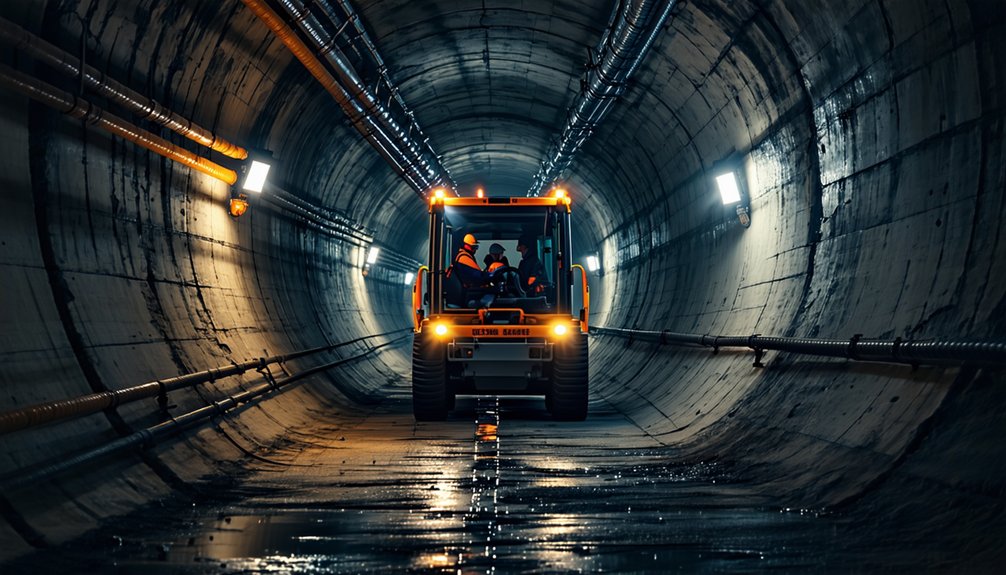The best sewer line inspection methods employ high-definition camera technology for clear visual assessments. Innovations like drones and remote monitoring enhance safety and efficiency while minimizing costs. Regular inspections are vital for aging systems, particularly in areas prone to tree root infiltration. It is essential to monitor environmental conditions as these factors can exacerbate sewer line vulnerabilities. Further insights into the latest advancements and maintenance strategies can lead to improved sewer infrastructure management.
Camera Inspections Explained
Camera inspections, which employ high-definition sewer inspection cameras mounted on flexible rods, provide a precise method for evaluating the condition of sewer lines. This technique allows for effective sewer line inspections, enabling professionals to conduct visual inspections that identify issues such as clogs, cracks, and tree root infiltration, all of which pose potential problems for the plumbing system. The use of advanced camera systems facilitates detailed video footage, serving as a valuable visual reference for both property owners and technicians. Lateral launch cameras enhance inspection capabilities by accessing branching lines, while push cameras, though limited in movement, remain essential for straightforward evaluations. Ultimately, camera inspections present a cost-effective solution compared to traditional methods, with the potential for drones to reduce costs by up to 40% per meter. This technological advancement in sewer line inspections fundamentally transforms maintenance strategies, promoting proactive management of sewer infrastructure.
Innovations in Sewer Inspection Equipment
The evolution of sewer inspection methodologies has led to significant innovations in equipment that enhance the evaluation process. High-definition sewer inspection cameras now provide clear visuals, allowing technicians to effectively identify issues like cracks and blockages. The introduction of drones, such as the Elios 3, enhances safety by enabling inspections of hazardous confined spaces without requiring physical entry, streamlining the overall inspection process. Remote monitoring technology further facilitates sewer inspections, allowing for efficient data collection and analysis without the need for direct access to the pipes. Advanced CCTV systems now incorporate features like remote focus and manual zoom, improving the quality of visual inspections. Additionally, the integration of LiDAR scanning technology is poised to revolutionize data accuracy and inspection efficiency, ultimately reducing the environmental impact of sewer assessments and enhancing the overall effectiveness of sewer inspection practices.
The Impact of Location, Age, and Maintenance
Understanding the factors influencing sewer line integrity is essential for effective maintenance and management. The age, location, and maintenance of sewer systems directly correlate with their performance and longevity. Older materials, such as clay or cast iron, are prone to corrosion and cracking after 50-60 years, which necessitates regular inspections. Additionally, the proximity of trees can lead to root infiltration, causing blockages and structural issues.
| Factor | Impact on Sewer Lines | Suggested Action |
|---|---|---|
| Age | Corrosion and cracks develop over time | Implement regular inspections |
| Location | Tree roots may infiltrate pipes | Monitor nearby vegetation |
| Maintenance | Early detection of issues prevents failures | Schedule routine check-ups |
Environmental conditions, including soil shifts, can exacerbate these vulnerabilities, making it imperative for homeowners in at-risk areas to prioritize maintenance to avert plumbing system failures.
Frequently Asked Questions
What Is the Average Cost to Camera a Sewer Line?
Ah, the glamorous world of plumbing expenses! Homeowners, yearning for knowledge, often inquire about camera costs for sewer inspections. Typically, this delightful adventure ranges from $100 to $800, depending on pipe condition and complexity. Video technology serves as a diagnostic tool, revealing hidden truths. On average, budgeting $250 to $500 suffices for professional services. Embracing preventative measures through informed financial planning guarantees maintenance doesn't transform into an unexpected financial quagmire.
How Do You Inspect a Sewer Line?
To inspect a sewer line effectively, various inspection techniques are employed, particularly utilizing advanced camera technology. These methods identify plumbing problems such as root intrusion and pipe deterioration. Regular inspections, ideally conducted by professional services, enhance maintenance tips for homeowners. The frequency of these inspections can prevent severe issues and costly repairs, emphasizing the importance of proactive drain cleaning and monitoring the sewer line's condition for peak functionality and longevity.
What Are the Methods of Testing a Sewer Line?
Various methods exist for testing a sewer line, employing diverse inspection techniques. Video cameras facilitate visual assessments of pipe integrity, while pressure testing evaluates structural resilience. Ultrasonic testing aids in leak detection, and smoke testing identifies hidden breaches. Dye testing helps trace flow patterns and potential obstructions. Additionally, root intrusion can be assessed through targeted inspections, ensuring thorough evaluations of the sewer system's functionality and longevity, ultimately promoting effective maintenance and management.
What Are the Methods of in Line Inspection?
In the domain of sewer line technologies, inline inspection techniques play a vital role in maintaining peak sewer health. Utilizing advanced pipe inspection equipment, these methods enhance inspection frequency recommendations and guarantee compliance with inspection industry standards. Video inspection benefits include real-time data capture, allowing for thorough inspection data analysis. Additionally, non-destructive testing methods offer insights into potential issues without invasive measures, ultimately supporting proactive sewer line maintenance and safeguarding system integrity.



